New York Police Department Exam Course: Become Part of the NYPD in 2024
- Overview
- Question Format
- Free Practice
- Curriculum
The path to becoming a New York Police Officer is as prestigious as it is demanding. The New York Police Department, one of the largest and oldest in the United States, upholds a tradition of excellence and integrity. To preserve this legacy, the NYPD employs a streamlined selection process designed to identify and advance only the most capable candidates.
We understand the significance of this challenge and are committed to supporting you through every step of your preparation. With our course, you’ll gain not only insight and understanding but also the confidence to excel in the NYPD testing process.
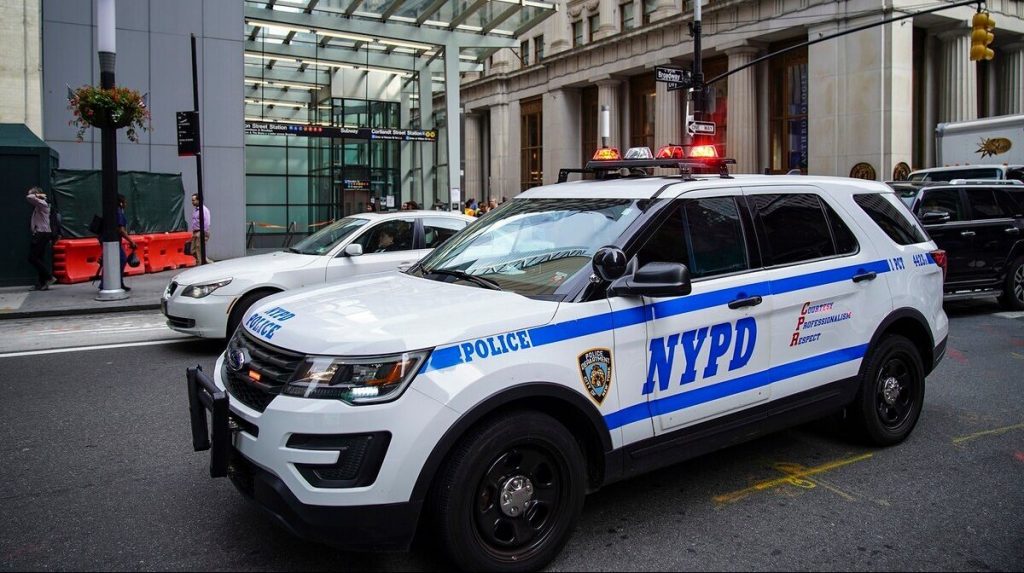
What You Get With Our Course
Two Full-Size NYPD Entrance Exam Simulations: These simulations mimic the actual NYPD exam, providing you with the best practical preparation.
Targeted Written Guides for Each Section: Dive deep into each cognitive area with guides tailored to enhance your understanding and skills.
Dedicated Practice Quizzes for Every Question Type: Test your knowledge and readiness with comprehensive quizzes that reflect the exam’s challenge.
What is the NYPD Exam?
The NYPD Police Officer Exam, officially known as Exam 4308, plays a crucial role for individuals aspiring to join New York City’s law enforcement team. This proctored computer-based test is administered by the New York City Department for Citywide Administrative Services (DCAS).
The examination consists of 55 multiple-choice questions designed to assess a range of law enforcement skills and knowledge. Those interested in taking the Police Officer Exam need to register through the Online Application System (OASYS), accessible at nyc.gov/OASYS.
The registration for the current cycle opened on April 3, 2024, and will close on June 28, 2024. The written examination is scheduled for Wednesday, July 24, 2024. A fee of $40.00 is required to complete the registration for the exam.
Format of the 2024 NYPD Written Police Exam
The NYPD Written Exam is the first stage of the NYPD hiring process. This exam evaluates your cognitive ability in 6 broad categories. The categories are: Verbal Reasoning, Logical Reasoning, Spatial Orientation, Visual Intelligence, Short/Long Term Memory & Problem Sensitivity. These cover the capabilities needed by a police officer on a regular basis.
Let’s take a look at all the cognitive abilities covered in the NYPD Exam 4308:
Written Comprehension
Are you good at picking up the main ideas from what you read? This section tests that skill. You’ll tackle texts that discuss policing issues, answering questions that require you to sift through details to extract key points.
Written Expression
Communicating clearly is non-negotiable. Here, your ability to express ideas succinctly and accurately is assessed. Organizing your thoughts into well-structured, understandable text is crucial, especially when it comes to writing reports that leave no room for error.
Deductive Reasoning
Think you can apply general rules to specific scenarios to solve a problem? That’s what this part is all about. From logical puzzles to real-life situations, you’ll need to demonstrate clear, rational thinking to navigate through the challenges.
Inductive Reasoning
Each scenario is a new puzzle. Can you spot the pattern or the outlier? This section tests your knack for making quick, smart decisions based on the information at hand, a vital skill in law enforcement.
Information Ordering
Order and logic drive this section. Whether it’s sequencing steps in a procedure or sorting data, your task is to create clarity from chaos, showcasing your ability to prioritize effectively.
Spatial Orientation
Maps and diagrams are your tools here. You’ll need to figure out routes and relationships between locations quickly and efficiently, skills essential for patrolling and responding to incidents.
Visualization
How well do you notice changes? This part will challenge you with objects and scenarios that have been altered. Recognizing what’s different and why it matters is key to mastering this test.
Memorization
This is an analysis of your observational skills. After a brief look at an image, you’ll need to recall small, specific details. This tests how attentively you can observe and remember under pressure, a critical skill on the job.
Problem Sensitivity
Lastly, your ability to foresee and address potential problems is put to the test. You’ll examine various scenarios to identify and react to subtle issues that could escalate if not managed promptly.
Each section of the exam is thoughtfully put together to evaluate and refine the skills necessary for effective and responsive police work, ensuring you’re well-prepared for the challenges of law enforcement.
NYPD Exam Practice Questions
Here we have explained some of the question types covered in the NYPD Exam – 4308. These cover separate question categories as mentioned below.
Spatial Orientation Practice Question
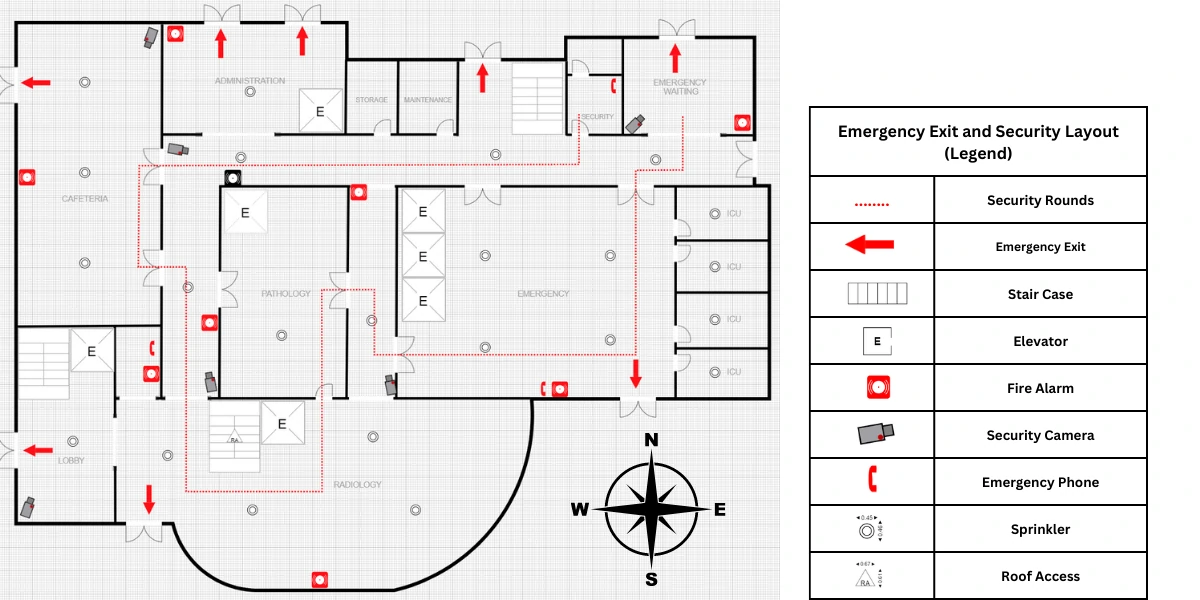
- A:
Storage to Cafeteria
- B:
Pathology to Maintenance
- C:
Security to Emergency Waiting
- D:
Lobby to Maintenance room
Explanation:
Refer to the red dotted lines present on the floor layout.
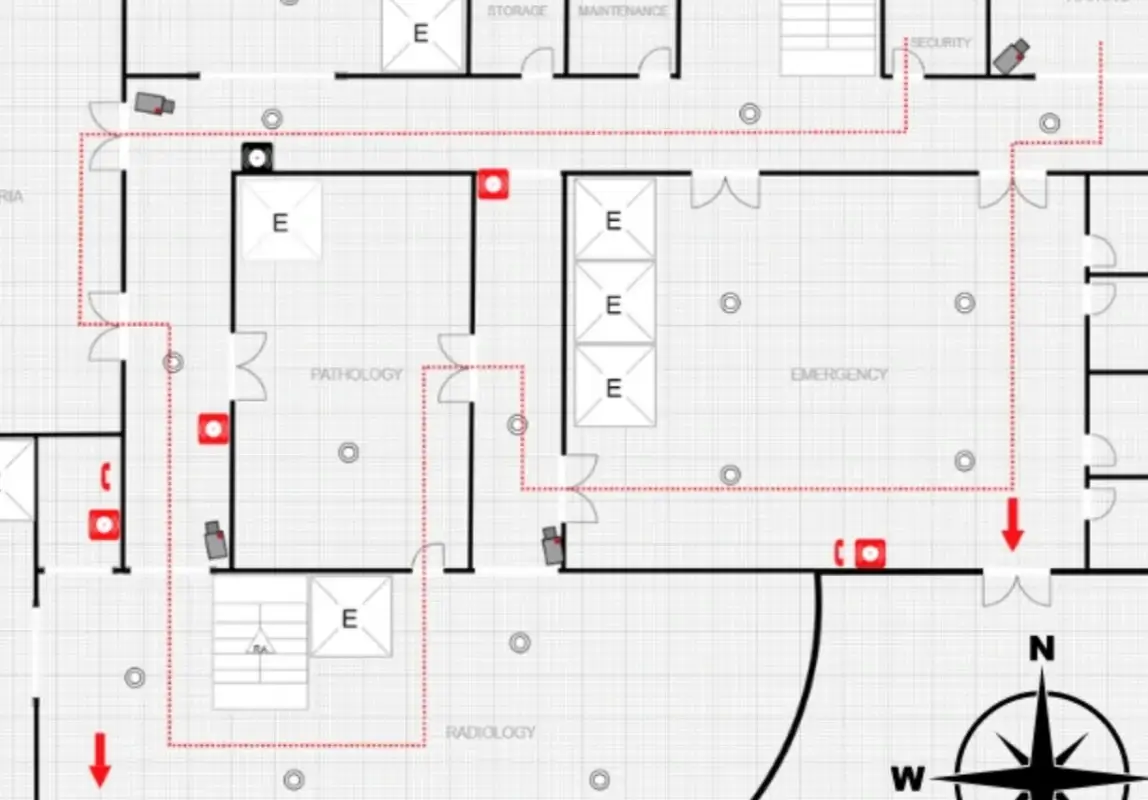
Visualization Practice Question
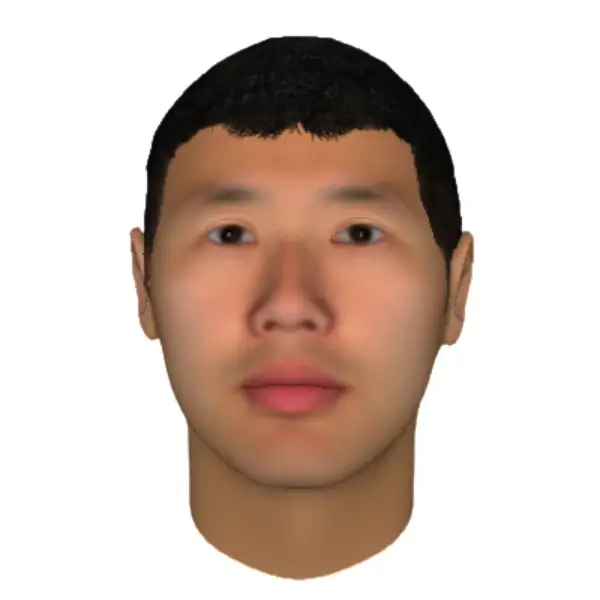
- A:
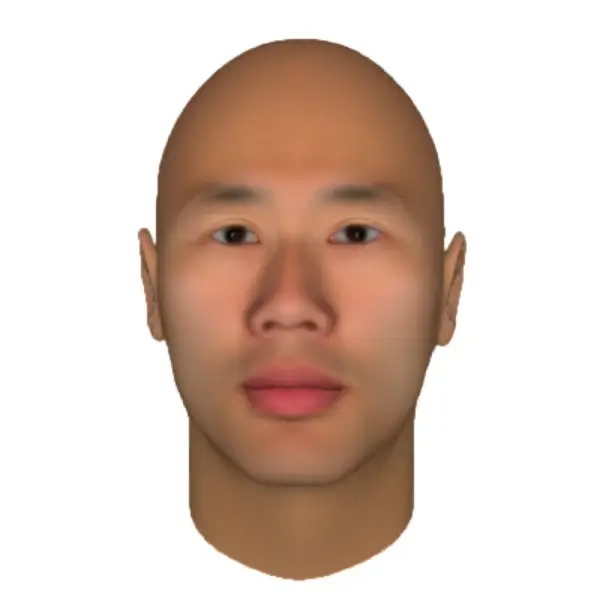
- B:
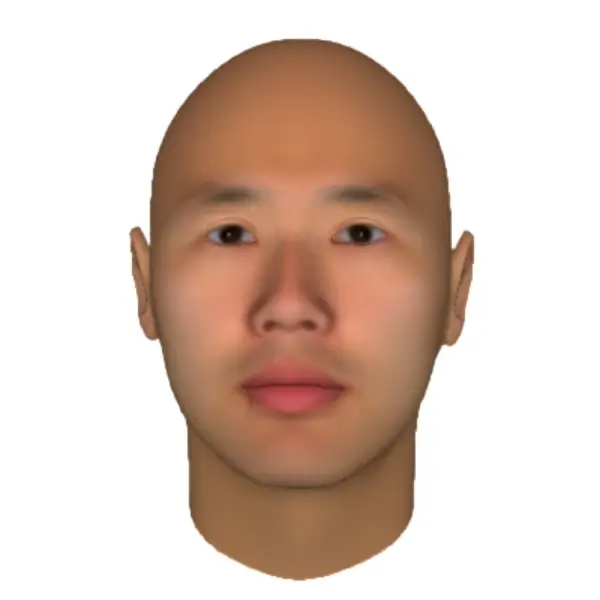
- C:
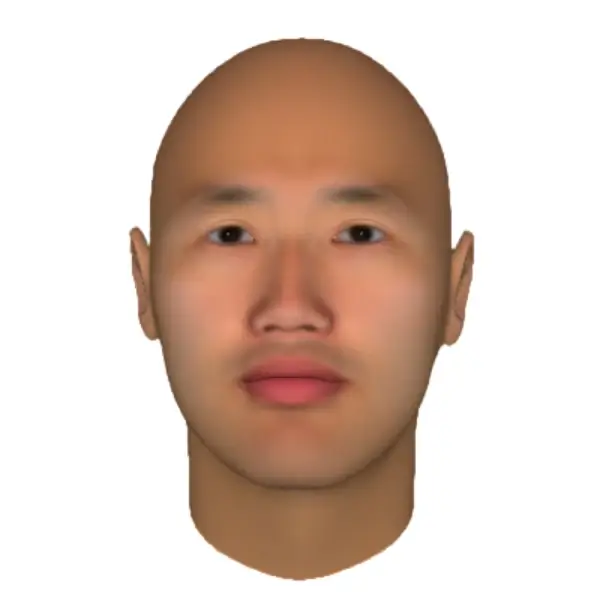
- D:
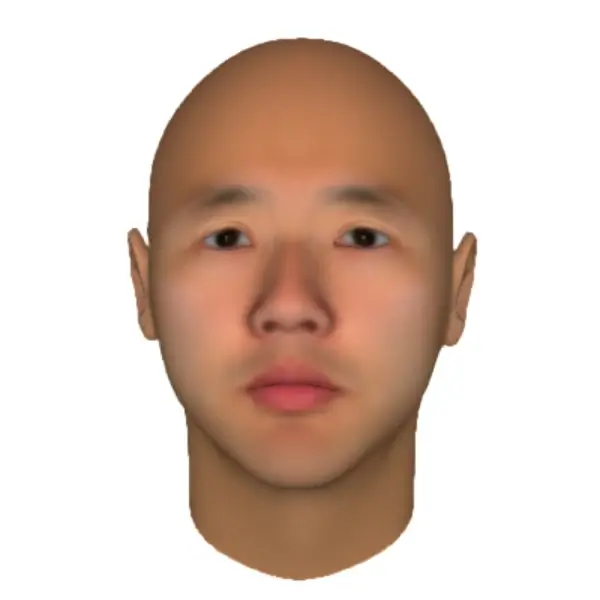
Explanation:
Option B matches the features of the original image exactly. Option A has a gaunt face and eyes situated closer together, Option C has a flatter nose and mouth situated upward, and Option D has a taller forehead, a retracted mouth, and a concave jaw compared to the original.
Thus, Option B is the correct answer.
Inductive Reasoning Practice Question
During a local festival, a rare sculpture was stolen from an outdoor art exhibit. Four witnesses provide detailed descriptions of the thief.
- A:
I saw a tall male, approximately 6'2", with curly red hair and a beard, wearing a green jacket and ripped jeans. He was quite slim, possibly around 170 lbs. He hastily grabbed the sculpture and slipped it into a large, blue backpack. I noticed he had a tattoo of a dragon on his left hand. He fled east towards Maple Avenue.
- B:
The person I saw was a medium-height male, about 5'10", with short red hair, wearing a dark green parka and old blue jeans. He seemed to weigh around 180 lbs. He took the sculpture and placed it carefully in a large, gray duffle bag. He had a noticeable scar on his right cheek. He ran west down Maple Avenue.
- C:
A man around 6'0" tall, with a red buzz cut, and a trimmed beard, was wearing a green windbreaker and blue distressed jeans. He weighed roughly 170 lbs. He quickly wrapped the sculpture in a blanket and put it into a big, blue backpack. He had a large eagle tattoo on his forearm. He hurried east along Maple Avenue.
- D:
I observed a male, about 6'1", with long red hair, wearing a faded grey bomber jacket and torn jeans. His build was lean, about 165 lbs. He concealed the sculpture under his jacket and then transferred it to a blue backpack. He had multiple piercings on his ears. He sprinted east on Maple Avenue.
Explanation:
The correct answer C, is derived by noting the most frequently mentioned and consistent elements across the accounts. However, there are just as many distinct elements as there are consistent ones. What’s more, this is simply one type of challenging inductive reasoning question out of many.
To get ahead of the curve and confidently answer these complex questions, enroll in our NYPD Prep Course where we break down each question type and the best solving strategies for each.
Information Ordering Practice Question
During advanced urban surveillance and intelligence gathering, police detectives utilize specialized equipment and tactics to monitor and locate high-profile suspects involved in organized crime. The steps to deploy an integrated surveillance system are listed below, but they are not in the correct sequence:
- Analyze the gathered data from various sources to triangulate the suspects’ location and understand their patterns.
- Establish secured and encrypted communication channels among all team members to ensure that operation details remain confidential.
- Calibrate and set up advanced surveillance equipment including acoustic devices, hidden cameras, and signal interceptors in strategic locations based on prior intelligence.
- Initiate the surveillance system, ensuring all components are functioning seamlessly and start recording and transmitting data.
- Coordinate with intelligence analysts and other law enforcement agencies to cross-verify information and gather additional insights.
- Conduct a comprehensive risk assessment to identify potential challenges and backup plans in case of system failure or discovery.
- Obtain legal authorizations and warrants required for the operation, ensuring all activities are within legal boundaries.
- Deploy undercover agents to blend in with the crowd and provide ground-level intelligence and immediate response if necessary.
- A:
7 > 2 > 6 > 4 > 1 > 8 > 5 > 3
- B:
1 > 6 > 7 > 8 > 4 > 5 > 3 > 2
- C:
7 > 2 > 6 > 3 > 4 > 5 > 1 > 8
- D:
6 > 7 > 2 > 3 > 4 > 5 > 8 > 1
Explanation:
The correct answer (C) is obtained by following the steps outlined above. First, legal authorizations and warrants are obtained (7) to ensure the operation stays within legal boundaries. Next, secure communication channels are established (2) to protect operational integrity, and so on.
Note: These questions represent just one question type of their respective sections. The actual test would contain multiple question types from each, we cover these along with the best solving strategies in our course.
NYPD Hiring Process
A spot in the NYPD Academy is tough to get to. Here’s the inside scoop on the selection process and what you need to bring to the table:
Written Entrance Exam
Kick things off with a written test by the Department of Citywide Administrative Services. It’s not just any test; it’s your first hurdle to prove you’ve got the smarts and skills for the badge.
Medical Exam
This isn’t your routine check-up. The NYPD needs to know you’re as fit as a fiddle—strong, healthy, and ready to take on the physical challenges of the job.
Psychological Evaluation (Written and Oral)
Think you can handle the stress and high stakes of policing? These intense evals dig deep into your psyche. They’re looking for resilience, stability, and a mind suited for the complexities of law enforcement.
Background Check
Get ready for them to comb through your life. Past behaviors, records, financial health—it’s all laid bare. They’re not just hiring a resume; they’re hiring a person of integrity.
Physical Fitness Test / Job Standard Test (JST)
Show them what you’re made of. This isn’t about being a muscle-head; it’s about proving you can handle the physical demands—chasing down suspects, managing tough situations—without breaking a sweat.
Requirements to Become a Police Officer
Here’s what it takes to qualify for a position with the NYPD:
- Age Matters: You need to be at least 21 years old to join the force. That said, the NYPD allows you to take the entrance exam starting at 17½ years old. This early start gives you ample time to prepare for a career in law enforcement. Just remember, you must apply before your 35th birthday.
- Smart and Educated: Education counts here. You must have earned at least 60 college credits with a minimum GPA of 2.0 from an accredited institution. Alternatively, if college isn’t your path, two years of active military service in the U.S. Armed Forces can also qualify you for the position. This shows your commitment to service and ability to handle challenging situations.
- Local Hero: You must be a U.S. citizen and possess a valid New York driver’s license. Additionally, within 30 days of being hired, you are required to reside in one of the city’s five boroughs or in Nassau, Suffolk, Rockland, Westchester, Putnam, or Orange counties. Living within these areas ensures you are part of the community you’ll serve and can respond quickly when needed.
These requirements are designed to ensure that candidates are well-prepared, committed to their roles, and deeply connected to their communities. If you meet these standards, you’re on your way to potentially joining one of the most respected police forces in the world.
Ready for the NYPD Fitness Test?
The Job Standard Test (JST) is your physical trial by fire, and you’ve got just 4 minutes and 28 seconds to prove your mettle:
Sprint and Scale: Imagine dashing 50 feet to leap over a fence—this checks your speed and agility.
Stair Mastery: Next, power up a flight of stairs; it’s all about your endurance and leg strength.
Hold Down the Fort: Show you can restrain a suspect, which tests your grappling skills and strength.
Chase Sequence: Run as if you’re pursuing a suspect, simulating the real-world rush of a foot chase.
Hero’s Lift: Drag a 176-pound mannequin for 35 feet. Think of it as rescuing a person—this tests your rescue mettle and stamina.
Trigger Skills: Finally, pull the trigger of an unloaded firearm multiple times to assess your hand strength and dexterity.
What About the NYPD Psychological Exam?
This two-pronged psychological evaluation ensures your mental readiness for police work:
Written Testing: Spend a full day filling out detailed autobiographical questionnaires, symptom inventories, and two lengthy personality assessments in a group setting. It’s as intense as introspective.
Pro Tip: Bring documents like your resume and transcripts to the written tests. Be open, honest, and, most importantly, be yourself.
Oral Interview: Sit down with a psychologist for a candid, hour-long chat about your life—education, work history, psychological background, and even your social life. They’re peering into your psyche to spot potential red flags or areas of concern.
Police Psych Exam Disqualifiers
No automatic mental health disqualifiers here—every applicant is assessed individually. If you’ve had mental health challenges, be ready to discuss your diagnosis, treatment, and how it’s shaped your life, for better or worse.
Facing the NYPD Medical Exam?
This comprehensive health check ensures you’re fit for duty:
Eyes on the Prize: Your vision should be 20/30 (corrected) and at least 20/100 (uncorrected) in each eye. Don’t forget your glasses or contacts, and prep for a color vision test.
Can You Hear This?: You’ll be tested on various frequencies in each ear. Hearing aids? They’re permissible under certain conditions.
Keep Your Cool: Your blood pressure must not exceed 140/90, with a pulse under 100 bpm. Tip: Skip the caffeine and stimulants before the exam.
Heart Check: An EKG will screen for any cardiac abnormalities.
Full Body Audit: After filling out a medical questionnaire, a Police Department physician will conduct a physical examination to cross-reference your history with current health.
Police Medical Exam Disqualifiers
Past injuries or surgeries aren’t necessarily deal-breakers. Just ensure you have all relevant medical records handy, as they’ll undergo review by city-appointed doctors.
Each test and requirement you encounter on this path is there to ensure that only the most capable and stable candidates join the ranks of the NYPD. If this sounds like the challenge you’ve been looking for, it’s time to step up and show you’ve got what it takes.
Take a Look at our NYPD Test Modules
 Introduction2 steps - 15 minutesBuy this Course: Get full access to all lessons, practice tests and guides.
Introduction2 steps - 15 minutesBuy this Course: Get full access to all lessons, practice tests and guides. Written Comprehension4 Steps - 1 Hour & 45 MinutesBuy this Course: Get full access to all lessons, practice tests and guides.
Written Comprehension4 Steps - 1 Hour & 45 MinutesBuy this Course: Get full access to all lessons, practice tests and guides. Written Expression4 Steps - 1 Hour & 30 MinutesBuy this Course: Get full access to all lessons, practice tests and guides.
Written Expression4 Steps - 1 Hour & 30 MinutesBuy this Course: Get full access to all lessons, practice tests and guides. Deductive Reasoning4 Steps - 1 Hour & 50 MinutesBuy this Course: Get full access to all lessons, practice tests and guides.
Deductive Reasoning4 Steps - 1 Hour & 50 MinutesBuy this Course: Get full access to all lessons, practice tests and guides. Inductive Reasoning4 Steps - 1 Hour & 45 MinutesBuy this Course: Get full access to all lessons, practice tests and guides.
Inductive Reasoning4 Steps - 1 Hour & 45 MinutesBuy this Course: Get full access to all lessons, practice tests and guides. Information Ordering4 Steps - 1 Hour & 25 MinutesBuy this Course: Get full access to all lessons, practice tests and guides.
Information Ordering4 Steps - 1 Hour & 25 MinutesBuy this Course: Get full access to all lessons, practice tests and guides. Spatial Orientation4 Steps - 2 Hour & 10 MinutesBuy this Course: Get full access to all lessons, practice tests and guides.
Spatial Orientation4 Steps - 2 Hour & 10 MinutesBuy this Course: Get full access to all lessons, practice tests and guides. Visualization4 Steps - 2 Hour & 25 MinutesBuy this Course: Get full access to all lessons, practice tests and guides.
Visualization4 Steps - 2 Hour & 25 MinutesBuy this Course: Get full access to all lessons, practice tests and guides. Memorization4 Steps - 1 Hour & 45 MinutesBuy this Course: Get full access to all lessons, practice tests and guides.
Memorization4 Steps - 1 Hour & 45 MinutesBuy this Course: Get full access to all lessons, practice tests and guides. Problem Sensitivity4 Steps - 1 Hour & 10 MinutesBuy this Course: Get full access to all lessons, practice tests and guides.
Problem Sensitivity4 Steps - 1 Hour & 10 MinutesBuy this Course: Get full access to all lessons, practice tests and guides. Bonus - Psychological Evaluation1 Step - 1 hour & 10 MinutesBuy this Course: Get full access to all lessons, practice tests and guides.
Bonus - Psychological Evaluation1 Step - 1 hour & 10 MinutesBuy this Course: Get full access to all lessons, practice tests and guides. Bonus - Medical Evaluation1 Step - 30 MinutesBuy this Course: Get full access to all lessons, practice tests and guides.
Bonus - Medical Evaluation1 Step - 30 MinutesBuy this Course: Get full access to all lessons, practice tests and guides. Bonus - Background Screening Procedure1 Step - 50 MinutesBuy this Course: Get full access to all lessons, practice tests and guides.
Bonus - Background Screening Procedure1 Step - 50 MinutesBuy this Course: Get full access to all lessons, practice tests and guides. Bonus - Polygraph Test1 Step - 45 MinutesBuy this Course: Get full access to all lessons, practice tests and guides.
Bonus - Polygraph Test1 Step - 45 MinutesBuy this Course: Get full access to all lessons, practice tests and guides.
FAQ
The timeframe to become a police officer can vary significantly, typically ranging from 6 months to 1 year. However, depending on individual circumstances such as background checks, test scheduling, and training completion, this period can extend from as short as 2 months to as long as 4 years. This variability underscores the importance of being prepared for a potentially lengthy process, which can be influenced by numerous factors, including the thoroughness of the required evaluations and the scheduling of training sessions.
Yes, the NYPD requires candidates to have completed 60 college credits with a minimum GPA of 2.0 from an accredited institution. This educational requirement ensures that candidates possess a basic level of post-secondary education, which can be crucial for the various challenges of police work, including critical thinking, effective communication, and understanding laws and procedures.
Candidates must be at least 21 years old to be appointed as police officers. However, they can take the Police Officer’s Entrance Exam as early as seventeen and a half years old. This allows potential recruits to begin the application process well before they are eligible for appointment, and they must register for the exam by their 35th birthday. This age framework facilitates a maturity level suitable for the demands of police work while providing a broad window during which candidates can enter the recruitment process.
The next NYPD exam is scheduled for July 24, 2024. The registration opened on April 3, 2024, and will close on June 28, 2024. There is a $40.00 fee to register. This scheduled and structured approach indicates a periodic opportunity for new candidates to apply, emphasizing the importance of timely registration and preparation.
The NYPD exam comprises 55 questions. This number indicates a comprehensive test, likely covering a range of topics pertinent to law enforcement duties and responsibilities.
After passing the exam, the Department for Citywide Administration Services (DCAS) assigns you a list number based on your score—the higher your score, the lower your list number, improving your chances for earlier consideration. You’ll then receive an invitation to create a NYPD Candidate Portal account and, when your list number comes up, to complete the Personal History Questionnaire. This initiates the detailed assessment process, moving you closer to becoming a police officer.
Candidates need to achieve at least 70% to pass the NYPD exam. This passing threshold ensures that all potential recruits have mastered a substantial portion of the material deemed necessary for effective performance in the role.

Created by: Michael Lerner
BSc, Psychometric Tutor, Prepterminal Test Expert
1426 students, 4.3, 193 Reviews
Hey, I’m Michael, PrepTerminal’s NYPD Course expert. I am here to help you with any questions or concerns you may have about the NYPD Course. Feel free to contact me at [email protected].